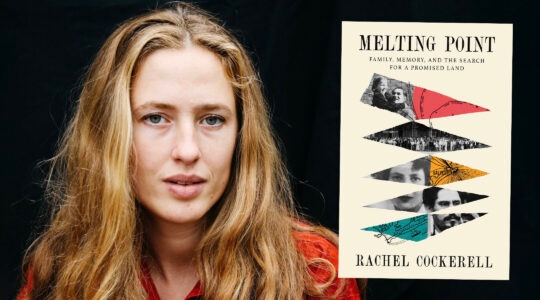Commentary Magazine, on the occasion of its 70th anniversary, has published a symposium, “The Jewish Future,” with brief predictions by 70 people on what will be the condition of the Jewish community 50 years from now. What follows is a subjective selection of ideas from that issue.
Many contributors pointed out the difficulty of making predictions and quoted Yogi Berra, who sagely noted, “It’s tough to make predictions, especially about the future.”
More soberly, former British Chief Rabbi, Lord Jonathan Sacks noted that “Jews make prophesies, not predictions. The difference is that if a prediction comes true, it has succeeded. If a prophesy has come true, it has failed. We don’t predict the future; we make the future.”
While we currently think of American Jewry as broken into three major denominations (with the largest grouping of all, those who don’t affiliate at all), Rabbi David Ellenson suspects “that there will instead be a tripartite division in American Jewish life segmenting into a large separatist haredi Orthodox enclave, a group of ‘Open Orthodox’ and traditionally oriented religious Jews, and a vast array of non-Orthodox Jews ranging from renewal and religiously liberal Jews to secular ones.” Similarly, Rabbi Jeremy Kalmanofsky describes the three groupings as follows: “The Amish, Jewish Human Beings, and descendants of Jews, who sporadically use Jewish technology.” He describes the middle grouping, Jewish Human Beings, as those “who actually practice Judaism” behaving along a spectrum stretching from liberal Orthodoxy to reasonably traditional Reform.
One thing that is echoed by quite a few contributors is the disappearance of Jews from Europe. But author Thane Rosenbaum points out that “Jewish flight is always accompanied by Jewish return. In a half-century, other Jews originating from somewhere else will replace the departing Jews of France and Germany. After all, many of the French Jews today are former Jewish Moroccans who were forced out of North Africa soon after the creation of Israel. Many of today’s German Jews are not old school yekkes but former refuseniks from the Soviet Union.”
Sticking to the theme of how Jews move about, quite a few predict that the U.S.-Israel estrangement will lead towards an Israeli pivot to India and China, noting that Far Eastern countries do not have a long history of anti-Semitism.
There are some singular thoughts in the various essays that struck me. Jewish Agency head Natan Sharansky expressed the hope for “a second chamber in the Knesset giving diaspora Jews a voice and even a vote on certain issues.” Mideast analyst Joshua Muravchik sees new sources of Jewish population coming from the lost tribes of Israel. He cites the prior examples of “the Beth Israel of Ethiopia, the Bukharans of Central Asia and the Bnai Menashe of India, each of which had a proven old tradition tracing its roots to one of the lost tribes before migrating to Israel in the late 20th and early 21st centuries.”
The issue of technology and the future effects on Jews was discussed by Israeli educator Micah Goodman who noted that Judaism would be relevant “through a realization of its ability to guard against modernity’s dangers. The halachic tradition, for example, provides periods of time free from technology and for spaces that protect family intimacy. It also cultivates a connection to something larger than the individual, softening Western narcissism and its accompanying alienation and isolation.”
Throughout there are magnificent sentences: “Rabban Yochanan Ben Zakkai needed to reinvent Judaism in a condition of powerlessness; now we must do so while being a super power.” (Gidi Grinstein) . . . “The Jews of France can go to Israel, but where can the French go?” (Tom Gross) . . . “The universal vaccine against anti-Semitism is unlikely to be discovered by 2065.” (AJC head David Harris) . . . “There may well be a Chabad House on the moon, but the purpose of Jewish life is not to survive, any more than the purpose of any our lives is to survive. Survival is a necessity, not a purpose.” (Radio host Dennis Prager) . . . “If rabbinical authorities don’t take seriously the plight of agunot and sexually victimized women and children, Orthodox Judaism will squander its place as the last best hope for American Judaism. If the lesson of the Catholic Church isn’t heeded, American Judaism will face the same fate.” (women’s rights activist Bethany Mandel) . . . “Today Jews have overachieved in every field except Judaism.” (Rabbi Jonathan Sacks).
I was very moved by the words of David Brog, executive director for Christians United for Israel, who says where Jews will be in 50 years “depends on the path both the West and the Jews choose today. If the West chooses poorly, Israel and the Jewish people will face an increasingly hostile world with fewer and fewer friends. We’ve already seen enough early signs of this possible future to understand how badly it will end. If Jews choose poorly, they will disappear even more quickly, but the West will certainly pay a price for Jewish folly. It will lose its stubborn conscience, its living connection to its most nourishing roots. A West without Jews will more readily revert to the ways of its classical predecessors and become societies less human and less humane. It’s happened before, and not as long ago as we’d like to think.”
Chabad’s Motti Seligson reminds us that on January 1, 2000, the New York Times printed a millennium edition with a fictional cover page dated January 1, 2100. “For some time the Times had been running a weekly ad each Friday on its front page. The little box – sponsored by Chabad-Lubavitch – noted that week’s Sabbath candle lighting time and encouraged Jewish women and girls to take part. With the Times fictional cover a century hence coming out on a Friday, its editors included the same little box in the corner calling on Jewish women and girls to light the Sabbath’s candles. Urban legend has it that it was an Irish-Catholic editor at the newspaper who pushed for its inclusion. ‘We don’t know what will happen in the year 2100,’ he reportedly said. ‘But of one thing you can be certain, in the year 2100, Jewish women will be lighting Sabbath candles.’”
Joseph R. Rackman is a partner in the New York office of the international law firm of Hogan Lovells US LLP. His e-book, “Why be Moral?” is available on Amazon.
The New York Jewish Week brings you the stories behind the headlines, keeping you connected to Jewish life in New York. Help sustain the reporting you trust by donating today.




